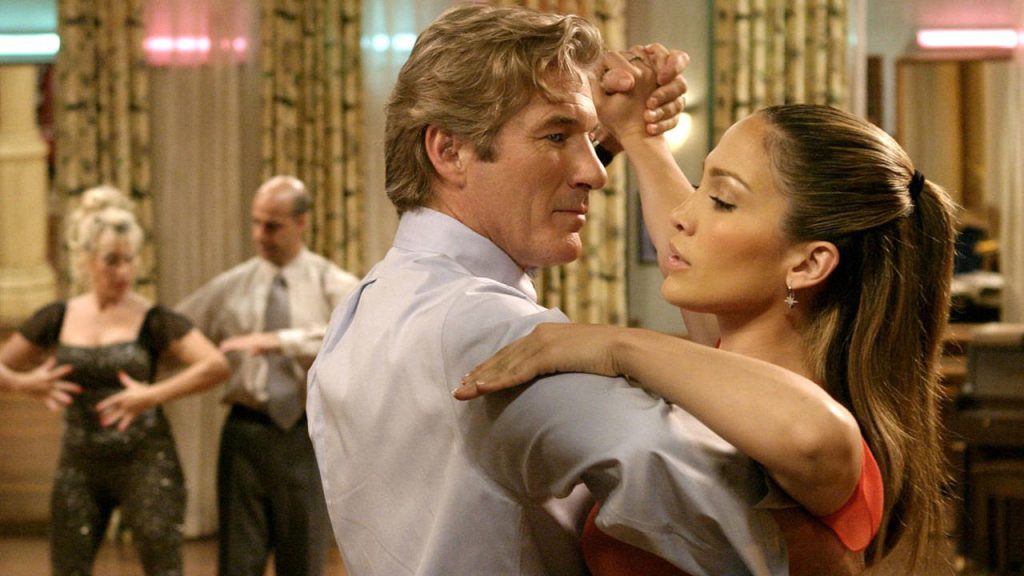Welcome to Harvey’s Hellhole, a monthly column devoted to spotlighting the movies that were poorly marketed, mishandled, reshaped, neglected or just straight-up destroyed by Harvey Weinstein during his reign as one of the most powerful studio chiefs in Hollywood. Since the director’s cut of Shall We Dance? is coming to Blu-ray this month, let’s revisit the star-studded remake that Harvey and them inflicted on us.
When I reviewed the American remake of the Japanese dramedy Shall We Dance? way back in 2004, I basically tore it a new one.
“Clunky and flatfooted, the American version of Dance strives to be as elegant and graceful as the original but ends up being pushy and cliched,” I wrote. I also threw in snide asides like “You can get more energetic choreography watching one of those occasional dance numbers from The Drew Carey Show” and “Anytime a movie has a rap-concert scene and the only rapper the filmmakers could get was Ja Rule, you know you’re dealing with something that doesn’t have its act together.” (Man, I was a smart-ass, pop-culture geek back then.)
I knew the remake would wring some brutal words out of me. The first time I saw Masayuki Suo’s 1996 original, I was won over by the graceful, charming story of a workaholic, emotionally distant family man (Kōji Yakusho) who begins ballroom dancing after catching a lovely young instructor (former ballet dancer Tamiyo Kusakari) staring out a dance studio window during his train ride home.
I caught a screening at the Museum of Fine Arts in Houston, months before Miramax released it here during the summer of 1997. Suo and Kusakari were in attendance, winning over the predominantly Texan audience by being jokingly stereotypical and taking a picture of the crowd during the introduction. I caught the movie again at the museum earlier this year, when it played the digitally restored director’s cut. It’s still one of the most soothing movies to watch on a museum’s big screen.
Dance also won over U.S audiences, grossing $9.7 million around these parts. Even then-president Bill Clinton said it was one of his favorite films that year. In retrospect, the story of a married man who carries on a secret relationship with another woman must’ve really struck a chord with Clinton, who would be cigar-deep in his notorious cheating scandal with Monica Lewinsky a year later.
I knew a remake would be inevitable – other critics could see it coming as well. “The Japanese Shall We Dance? is a perfectly enjoyable weepie that looks like it was made to be re-made–in Hollywood,” critic Peter Rainer wrote in 1998. Six years later, the remake showed up, ready to piss off fans of the original.
Just like the OG Dance, my thoughts on the remake haven’t changed after a recent rewatch. It’s still a clumsy, infuriating mess of a movie. Harvey Weinstein recruited British director Peter Chelsom (who directed the Miramax films The Mighty and Serendipity) and the late screenwriter Audrey Wells (The Truth About Cats and Dogs, Under the Tuscan Sun) to come up with a version that’s bereft of the rhythmic romanticism and sophisticated storytelling the original had in droves.
Weinstein certainly rounded up the stars for this remake, which was originally planned as a Tom Hanks vehicle. This time around, Richard Gere is the pencil-pusher who gets the urge to dance after spotting Jennifer Lopez’s enchanting, sad-eyed instructor in the window of Miss Mitzi’s Dance School. Susan Sarandon also stars as Gere’s wife, who suspects his husband is having an affair when he starts coming home late.
Although Chelsom and Wells keep the original’s storyline intact, their Chicago-based version has a tone that can be best described as ugly American-esque. The dance studio is swarming with obnoxious characters, including a tacky, tactless single mom (a pre-Abbott Elementary Lisa Ann Walter) and a wannabe stud (Bobby Cannavale) who thinks Gere’s character is gay. Gay panic is an unfortunate (and dated) running theme in this Dance. Stanley Tucci also shows up as Gere’s salsa-dancing work colleague, who keeps his fancy footwork a secret for fear of being ridiculed by co-workers. (He keeps his identity hidden by putting on a wig and makeup and acting like a Great Value Antonio Banderas.) Chelsom and Wells also amps up the original’s subtle, farcical moments, like when Sarandon’s worried wife hires a pair of eccentric detectives (Richard Jenkins and an Afro-ed Nick Cannon) to keep tabs on her husband.
The thing that made the Japanese Dance so charming and endearing – it’s a rom-com where a man and a woman dance their way to a platonic, kindred-spirit bond – is something that the stateside Dance fumbles immensely. Chelsom and Wells try to rustle up some sensual chemistry between Gere and Lopez’s characters, even giving them a seductive dance sequence that ends with them all panting and sweaty. But, for the most part, their interactions are awkward and forced. You could tell Chelsom and Wells had trouble trying to make a convincing love story where the two leads (who just happen to be played by two of the most eternally attractive movie stars of all time) don’t bone. They concentrate more on Gere and Sarandon’s characters near the end, practically turning the climactic dance Gere and Lopez have – the glorious grand finale in the original – into an afterthought.
The Shall We Dance? remake is just another example of Weinstein taking something beautiful and watering it down for middlebrow American audiences. It’s interesting how two films can be so alike – but while one sweeps you off your feet, the other keeps falling on its ass.
The 2004 “Shall We Dance?” is available to rent or buy. The 1996 “Shall We Dance?” – well, just cop that shit!

